- Call us: 01444 237070
- Contact Us
- Stores
- Sign In / Register
-
- Back
- Used Cameras
- Used Accessories
- Used Lenses
- Used Video
- Used Film Equipment
- Used Stock Alert
- Used Blank Test
- Sell or Part Exchange
- Used Clearance
- Recently Added Used Equipment
- Park Picks
- All Used Black Friday Deals
- Faulty
- Trade-In
- Blog
- New in
- Call us
- Contact us
- Stores
- Sign in
- Categories
- Tips & Inspiration
- Reviews
- News
- Events
- Features
- Buying Guides
- Competitions
10 Years of Sony Alpha Full-frame Mirrorless
On October 16, 2023, Sony Alpha full-frame mirrorless celebrates its 10th anniversary, and when presented with the opportunity to share my experiences of shooting with a Sony full-frame camera, I eagerly embraced the chance.
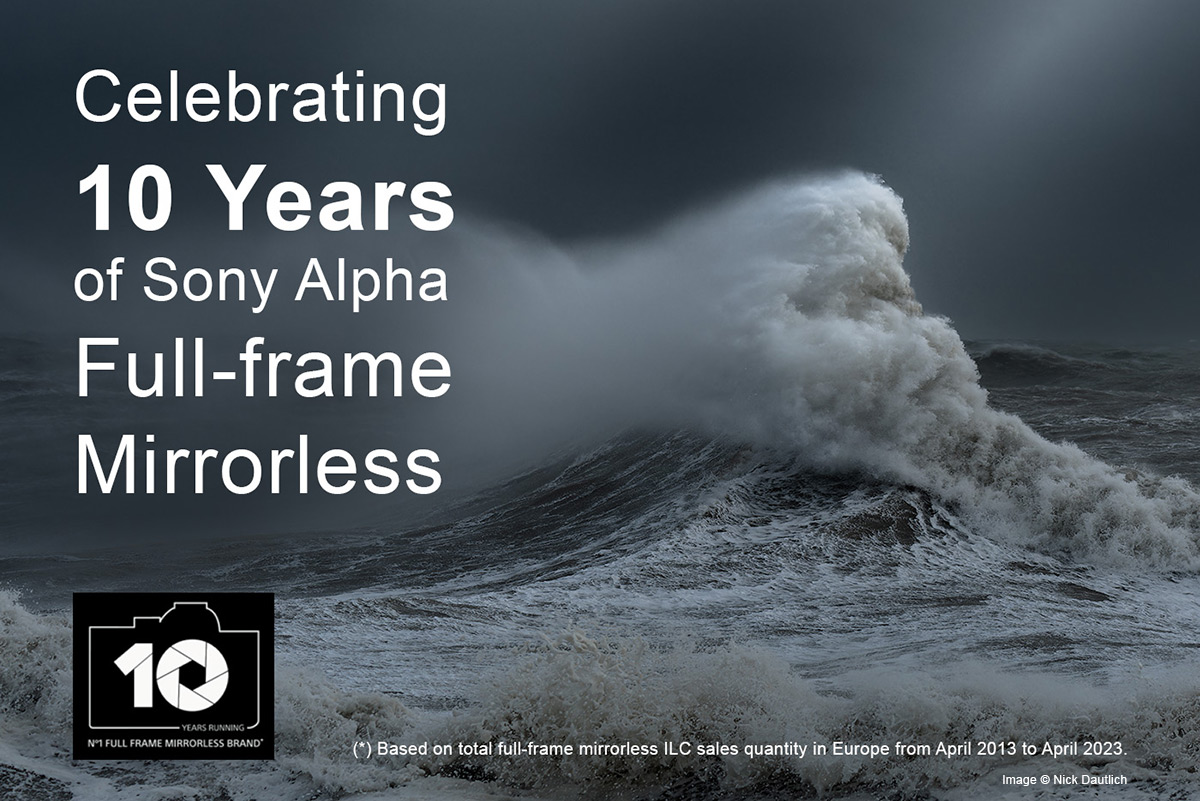
There are few brands who have been as instrumental in shaping the mirrorless camera market as Sony, with millions of users worldwide exploring stills, video and hybrid creativity with a Sony alpha camera. Amongst their many accolades is the world’s first full-frame mirrorless camera with autofocus, which heralded a new era for photographers who were keen to adopt mirrorless technology.
Why not join us as we celebrate 10 Years of Sony Alpha Full-frame Mirrorless through a brief history, and closer look at the comprehensive range of alpha a7 cameras available today, which inspire creators of all levels to share their vision with a Sony full-frame camera.

Dragonfly. Sony ILCE-7RM5 with FE 100-400mm F4.5-5.6 GM OSS @400mm. © Nick Dautlich Camera settings: 1/500 sec. f/8. ISO 1600
A brief history of Sony mirrorless cameras
With a prototype MAVICA camera appearing during the LA Olympics in 1981 it was clear that Sony was entering the digital camera market, although it wasn’t until 1996 when the first Cyber-shot digital camera took shape.
Sony went on to develop various compact cameras, bridge cameras and Digital SLRs, before taking the world by storm in October 2013 with the launch of the Sony a7 and a7R.
The world’s first full-frame mirrorless cameras with autofocus offered a 24 megapixel (Alpha 7) and 36 megapixel (Alpha 7R) CMOS sensor within a lightweight body, rivalling even the most compact micro four thirds cameras of the era.
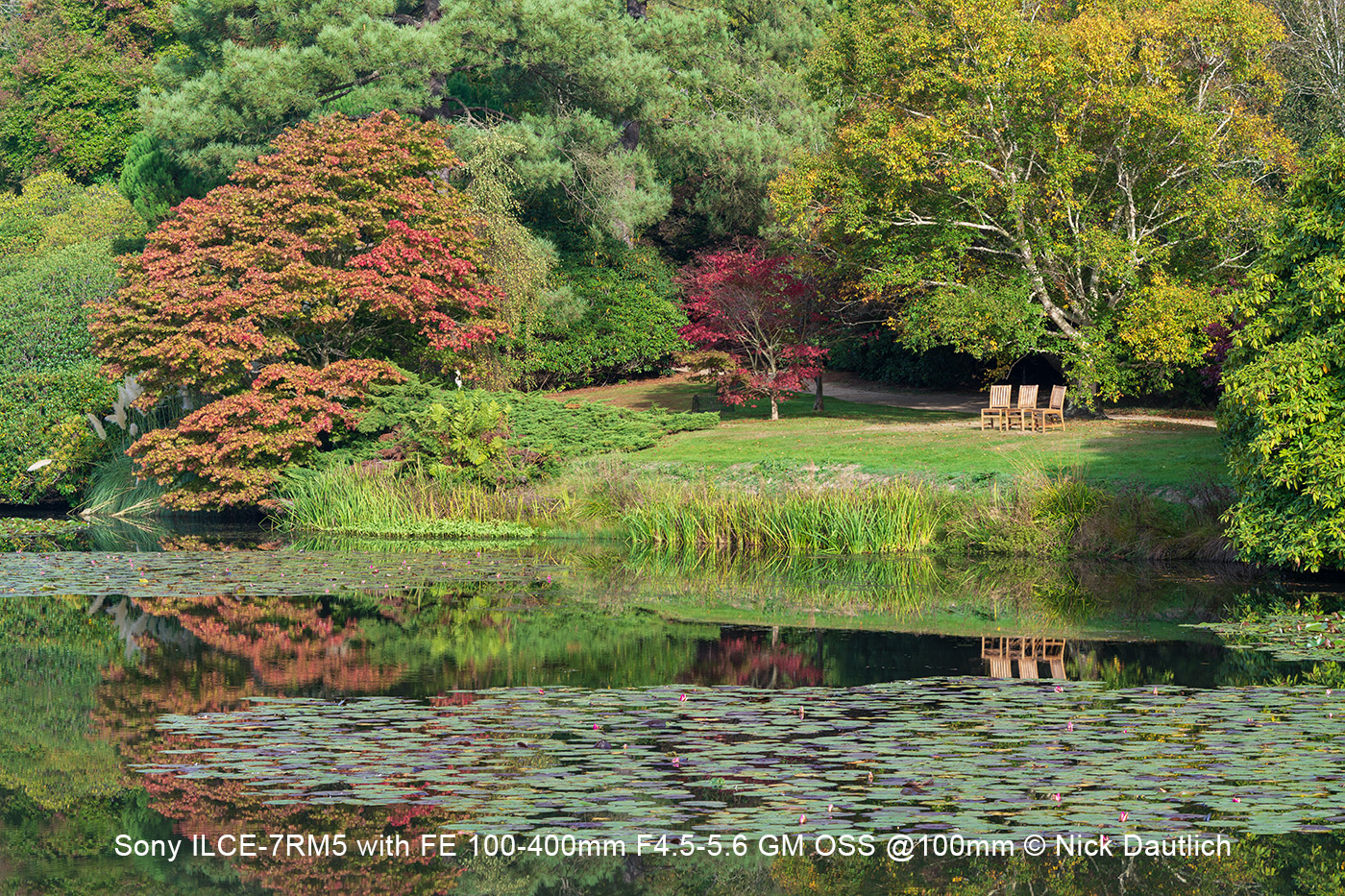
Gardens. Sony ILCE-7RM5 with FE 100-400mm F4.5-5.6 GM OSS @100mm © Nick Dautlich Camera settings: 1/40 sec. f/8. ISO 100
Full-frame denotes the 35mm sensor size, emulating the popular 35mm film format, which has been enjoyed by photographers over many decades.
Following the release of these first Alpha 7’s, the digital camera market changed forever, with traditional camera brands playing catch-up for years to come, as Sony evolved the system with a slew of new features and ground-breaking technology. New full-frame camera bodies were launched across several ranges, making substantial technology gains, whilst appealing to ever more diverse audiences with every generation.
Thankfully within just a generation or two Sony developed high-capacity batteries, which offered substantially longer battery life, addressing one of the major concerns DSLR users had for switching to mirrorless.
Today’s models include the NP-FZ100 Rechargeable Battery and NP-FW50, which offer industry-leading shooting times, and while this might seem trivial, when you shoot longer sessions it pays to only need one or two additional batteries.
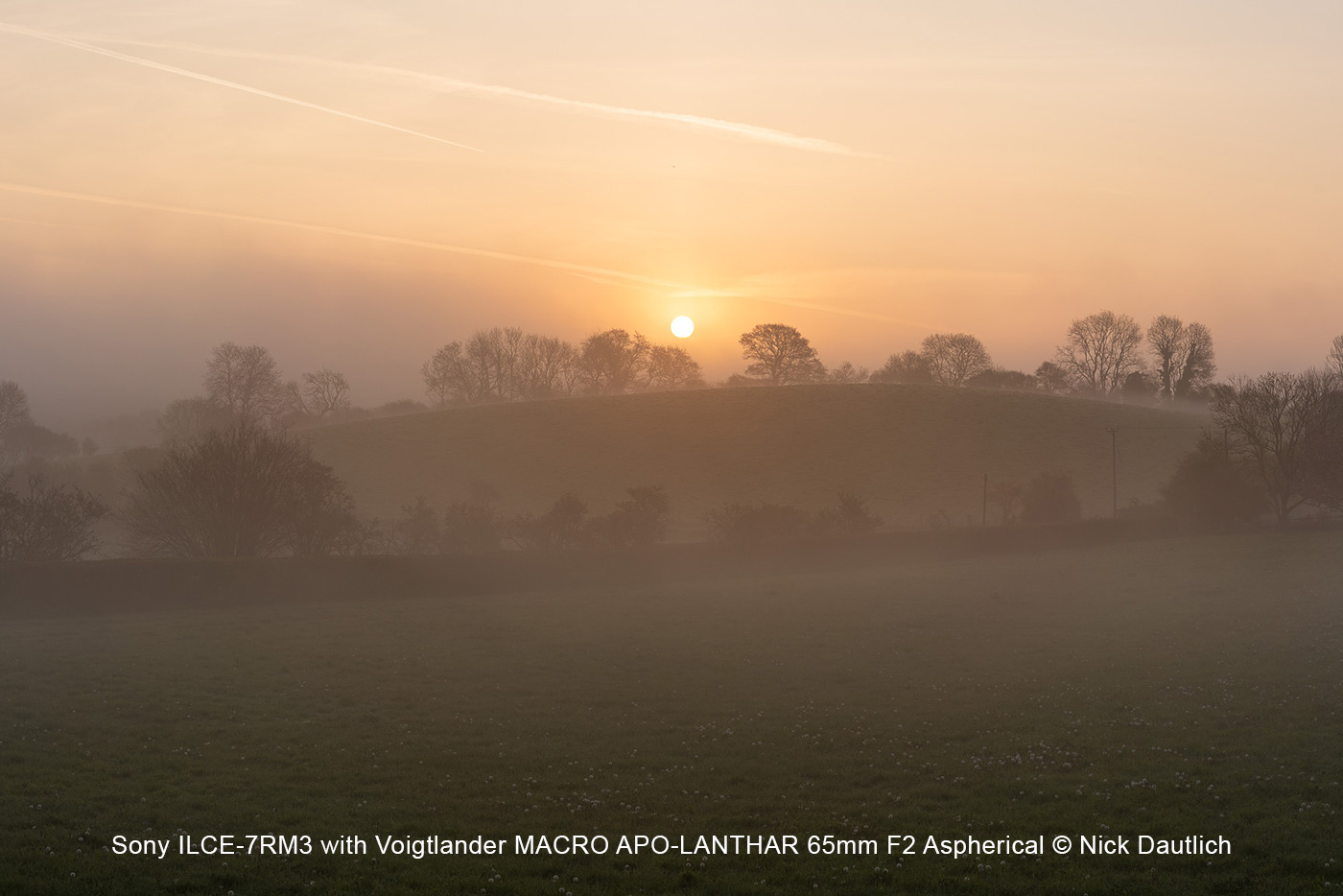
Sunrise. Sony ILCE-7RM3 with Voigtlander MACRO APO-LANTHAR 65mm F2 Aspherical © Nick Dautlich Camera settings: 1/320 sec. f/6.3. ISO 100
What are the benefits of a full-frame camera?
Although cameras with any sensor size are capable of rendering amazing images, full-frame is ubiquitous among professionals and enthusiasts who crave high quality results. Full-frame cameras render high image quality due to a combination of admitting more light, and the shallower depth of field, which full-frame provides.
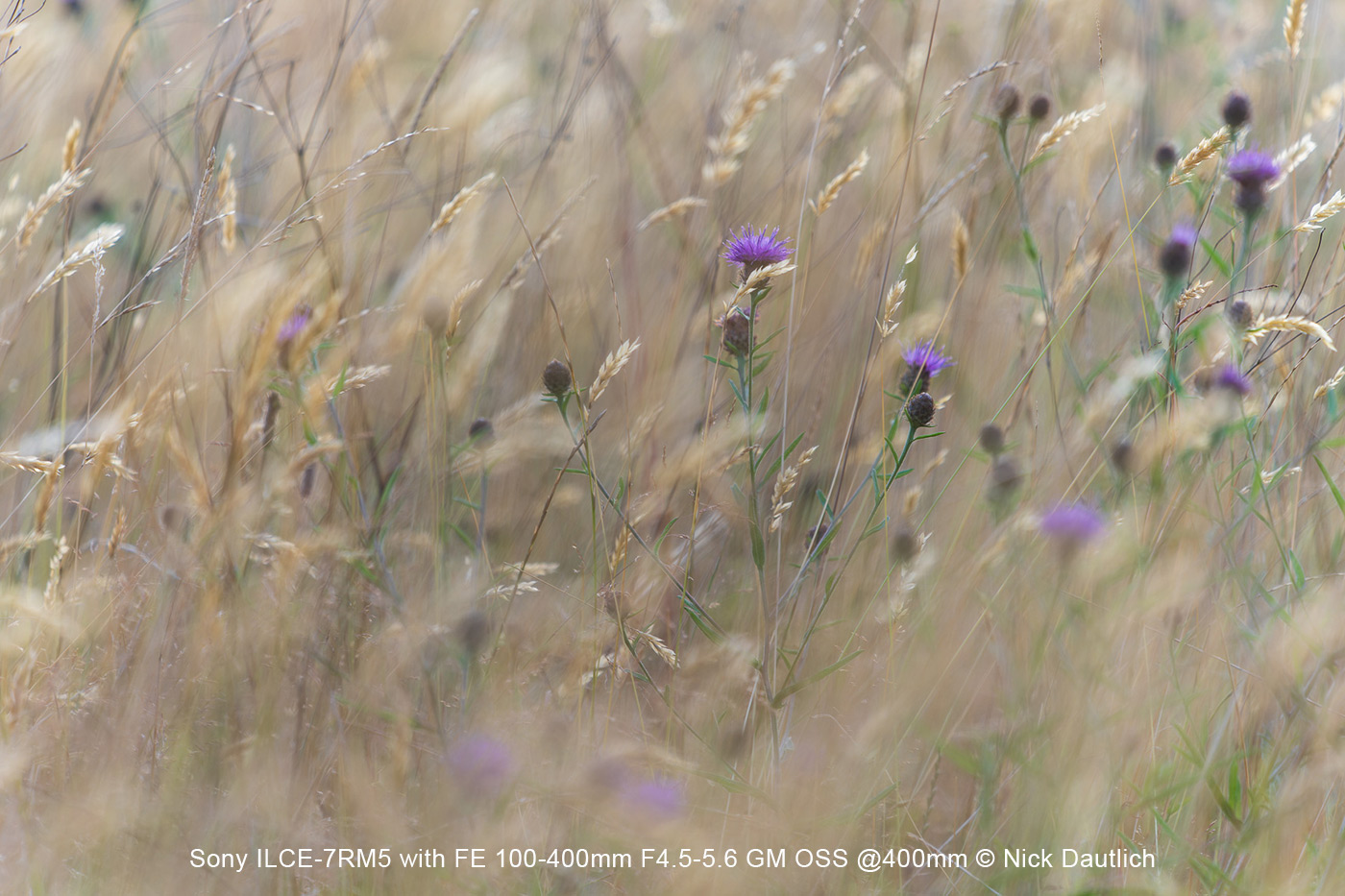
Flowers. Sony ILCE-7RM5 with FE 100-400mm F4.5-5.6 GM OSS @400mm © Nick Dautlich Camera settings: 1/400 sec. f/5.6. ISO 400
Sony full-frame cameras for every genre and skill-level
One of the many benefits which Sony full-frame cameras provide is the ability for every level of user to find the perfect model to suit their requirements and preferred genres. The range is divided across a number of categories, which span body size, resolution and video capabilities, and include:
- Alpha series hybrid cameras (flagship a1, a9 II and more)
- C-series compact cameras (a7c II)
- 7-Series hybrid cameras (a7 IV)
- R-Series high resolution models (a7R V and a7CR)
- S-Series high-speed pro movie/still cameras (a7S III)
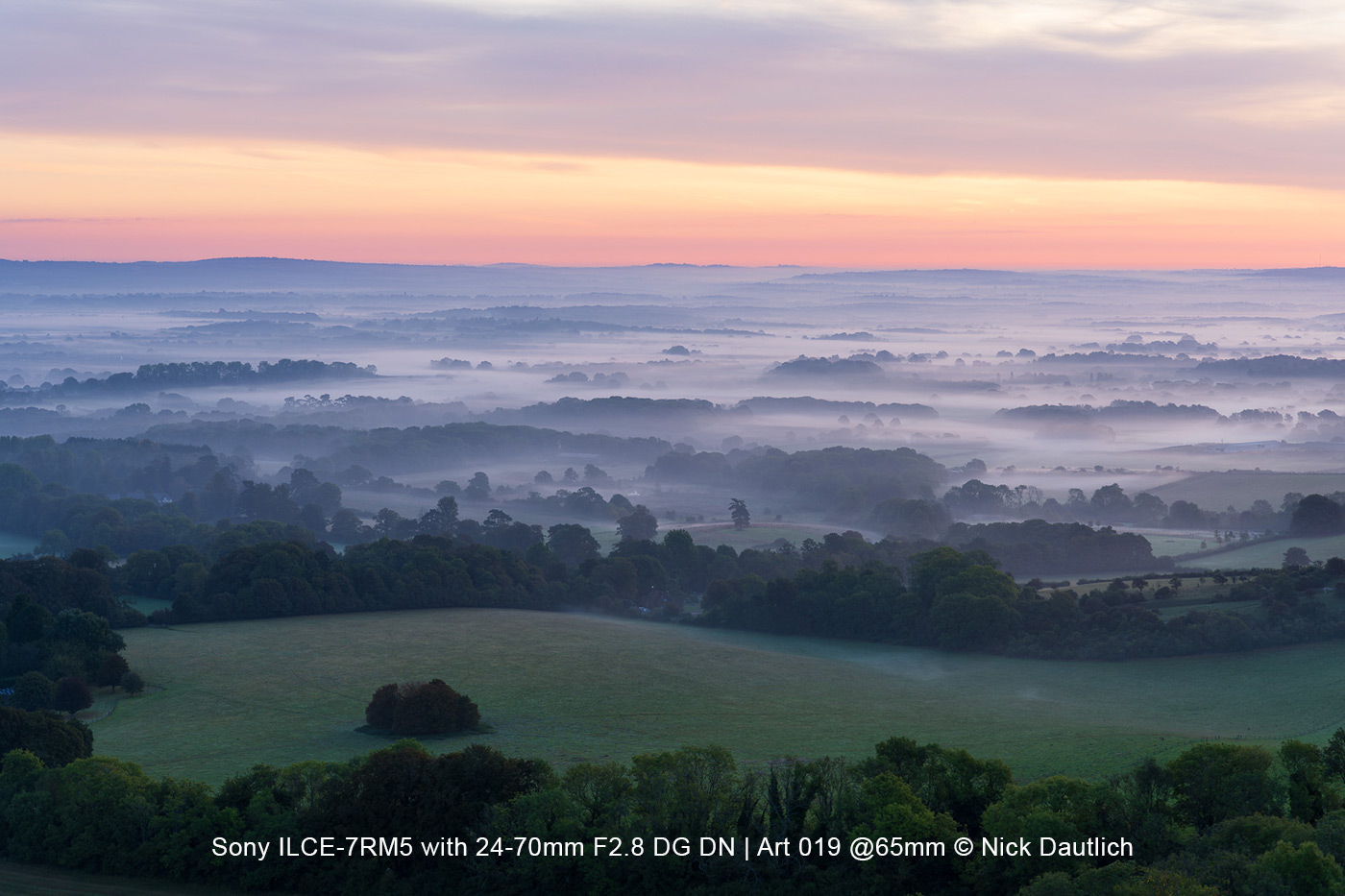
Landscape. Sony ILCE-7RM5 with 24-70mm F2.8 DG DN | Art 019 @65mm © Nick Dautlich Camera settings: 1/13 sec. f/8. ISO 100
Alpha technology milestones
Having created the first full-frame digital camera with Autofocus, Sony has continued to pioneer by evolving the Alpha system with a number of world first and award winning features. Three of the most notable technological milestones include:
- A new Hybrid Phase Detection AF system was released in 2016, which combined contrast detection AF with Phase detection AF, resulting in far more accurate autofocus. This was featured in the original a7 and received wide acclaim, helping to expedite the adoption of the Alpha series.
- In 2017 the original a9 camera added high-speed blackout-free AF/AE continuous shooting at up to 20fps, which wowed photographers and enticed high-speed sports, action and wildlife shooters en masse.
- With its 61 megapixel back-illuminated Exmor R™ CMOS image sensor, the a7R IV became the highest resolution full-frame camera ever released. The same sensor in the a7R V continues this high resolution accolade, with astounding image quality, which is also endlessly crop-able. What’s more is that Sony has ported this high resolution sensor into the A7CR camera, placing incredible imaging potential into an ultra compact body.
A seemingly endless list of features which Sony has developed now includes 8K in-camera video recording, S-Log colour profiles with 15+ stops of dynamic range, up to 8-stop image stabilisation, and a host of user-friendly features to help you get the most out of your camera.
It’s safe to say that Sony is staying ahead of the curve with every new model introducing upgrades to make content creation better, easier and faster.
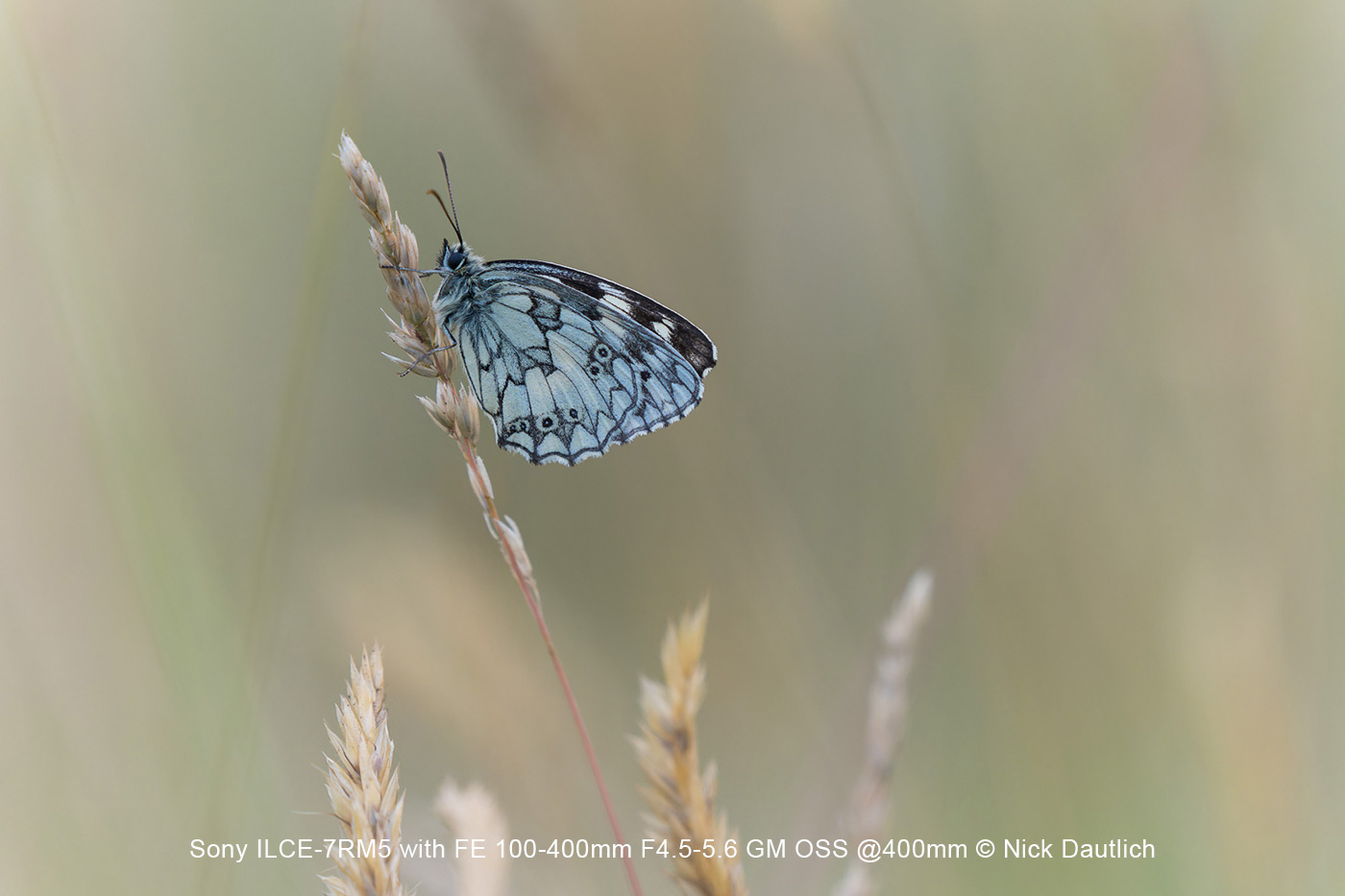
Butterfly. Sony ILCE-7RM5 with FE 100-400mm F4.5-5.6 GM OSS @400mm © Nick Dautlich Camera settings: 1/250 sec. f/6.3. ISO 1600
Advanced autofocus systems
One of the most appreciated features is Sony’s highly evolved autofocus, which today incorporates artificial intelligence subject detection and tracking via a dedicated AI processing unit. Having reliable realtime eye-tracking at your fingertips has revolutionised how photographers and moviemakers can achieve accurate focus on a human subject’s eye, as well as animal eyes and indeed some insect heads are now also recognised.
Cameras such as the A7R V, A7C II and others now feature Real-time Eye AF for Animals, Humans, as well recognising as Animals/Birds, Cars/Trains and Airplanes, and insects.
Advanced AF algorithms utilise AI to detect the eye, face and body of a subject, with the latest cameras able to track and maintain sharp focus by estimating human poses, tracking an eye, then switching to the face or body parts when the eye is not visible.
In practice Sony’s AF system is exceptional, if not completely perfect. When shooting with subject AF tracking and continuous burst engaged, you will find significantly more of your shots are in focus than you considered possible, regardless of how quickly the subject is moving.
Naturally you have to dial in the correct shutter speed and use high quality lenses to guarantee sharpness, but Sony’s AF provides huge benefits for anything from vlogging and video recording, to portraiture, sports and wildlife photography.
When I predominantly photographed landscapes this technology wasn’t as important, however today I use Sony AF in around 50% of my work and it has made a huge difference to the number of images which are sharp, especially when paired with enhanced body and lens stabilisation.
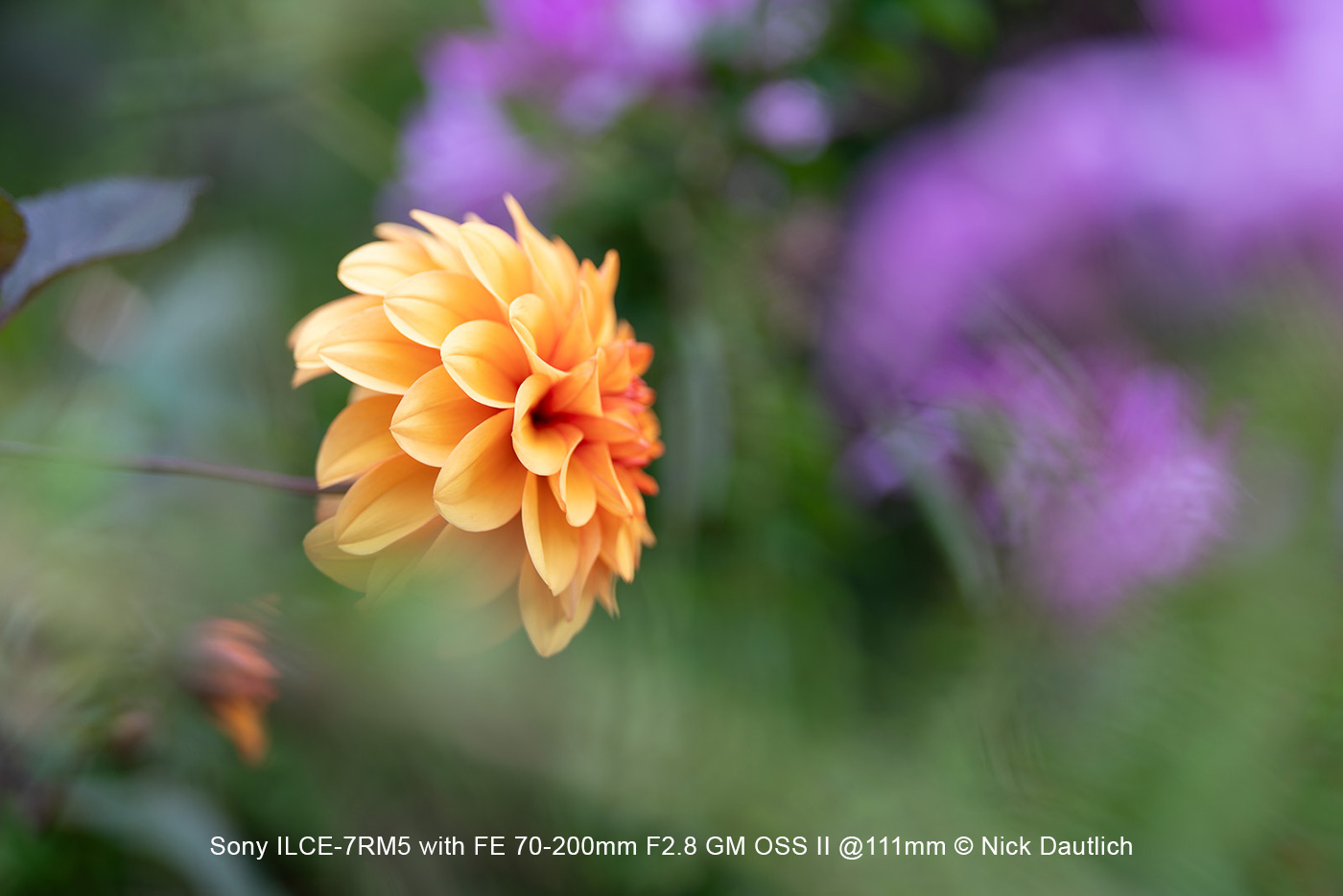
Flowery. Sony ILCE-7RM5 with FE 70-200mm F2.8 GM OSS II @111mm © Nick Dautlich Camera settings: 1/250 sec. f/2.8. ISO 200
Sony full-frame video cameras
In addition to advanced autofocus capabilities, Sony has engineered cameras throughout the entry-level and professional line-up that excel in capturing high-quality video. While the A7S III is known for capturing stunning movie quality, virtually any camera from the current range will record video at or near, professional-levels.
A number of supporting technologies such as stabilisation, Auto-framing and assignable LUTs make it less challenging to shoot brilliant movies in a variety of situations.
With 4K and 8K readily available at various frame rates and compressions, Sony is the preferred brand for not only many filmmakers but also vloggers. Models such as the full-frame Sony ZV-E1 combines advanced video features for stabilised 4K/60p 10-bit 4:2:2 with 15+ stops dynamic range from S-Cinetone / S-Log 3.
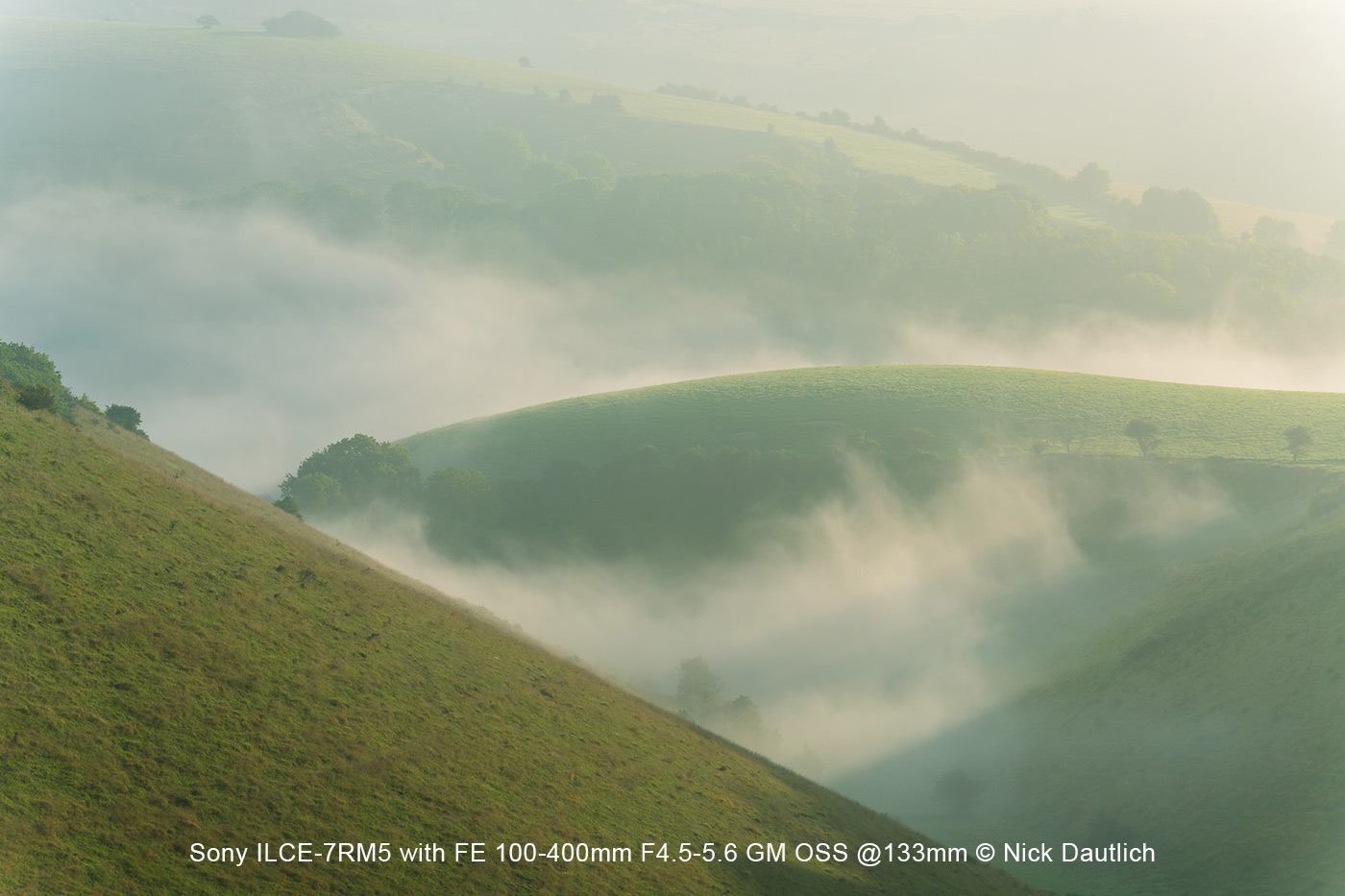
Hills. Sony ILCE-7RM5 with FE 100-400mm F4.5-5.6 GM OSS @133mm © Nick Dautlich Camera settings: 1/250 sec. f/8. ISO 200
Sony full-frame hybrid cameras
Although all Sony cameras are stills and video capable, a couple of models standout as thoroughbred hybrids equally suited to both photography and videography. The flagship Sony A1 is amongst the world’s most impressive mirrorless cameras, with 8K 30p movies and 50.1MP stills at a blistering blackout-free 30fps, while processing 120 AF/AE calculations per second.
At the other end of the range, the Sony A7 IV lives up to its ‘baby A1’ nickname, and is capable of recording 4K/60p, full frame 7K oversampling 4K/30p, and 33 megapixel stills at up to 10fps with AF/AE Tracking.

Ice. Sony ILCE-7RM3 with Voigtlander MACRO APO-LANTHAR 65mm F2 Aspherical © Nick Dautlich Camera settings: 1/20 sec. f/5.6. ISO 100
Ergonomics and usability
Sony has nurtured the original concept of mirrorless cameras being small and lightweight, whilst refining the user experience by integrating more advanced customisation and control. Models now include everything from blackout-free burst shooting to class-leading LCD touchscreens with full articulation, and everything in between.
Users are unanimously grateful for updated menu systems with touch control, swiping, pinching to zoom and other UX enhancements, as well as the ability to choose custom presets, dedicated video/stills control and more.
Once you have mastered the initial learning curve, Sony cameras are intuitive, quick to operate and enjoyable to shoot with. The more cameras reviews I write, the more shooting with my own Sony feels like coming home, and you can’t ask for more than that from any system.

Morning. Sony ILCE-7RM3 with FE 100-400mm F4.5-5.6 GM OSS @336mm © Nick Dautlich Camera settings: 1/10 sec. f/6.3. ISO 100
Sony full-frame lenses
A significant benefit of the Sony mirrorless system is the availability of countless compatible Alpha full-frame lenses to suit every possible subject and budget. These are made by both Sony who have over 70 E-mount lenses, which offer some distinct advantages, and a variety of third party manufacturers too.
When shooting with Sony-own brand lenses you may find that your camera is able to burst at its fastest rate and achieve impeccable performance, especially when shooting with GM (G Master) high-end lenses, which offer:
- Lightning-fast autofocus
- Outstanding bokeh
- Dust and moisture resistant bodies
With a catalogue of over 70 models, Sony has begun to redesign the most popular, such as the Sony 16-35mm F/2.8 GM II, 70-200mm F/4 G OSS II and 70-200mm F2.8 GM OSS Mark II. Second generation lenses are arriving with multiple linear AF motors, enhanced close-up performance, higher magnification and improved image quality, keeping pace with newly developed camera technology and user's needs. If you can imagine an image, you’ll find the perfect lens to capture it.
Many photographers including myself own a combination of Sony and third party lenses, which is one of the appeals of the Alpha ecosystem. When you shoot with a full-frame Sony camera you can choose from lens brands such as:
- Laowa
- Samyang
- Sigma
- Tamron
- TTArtisan
- Viltrox
- Voigtlander
- Zeiss
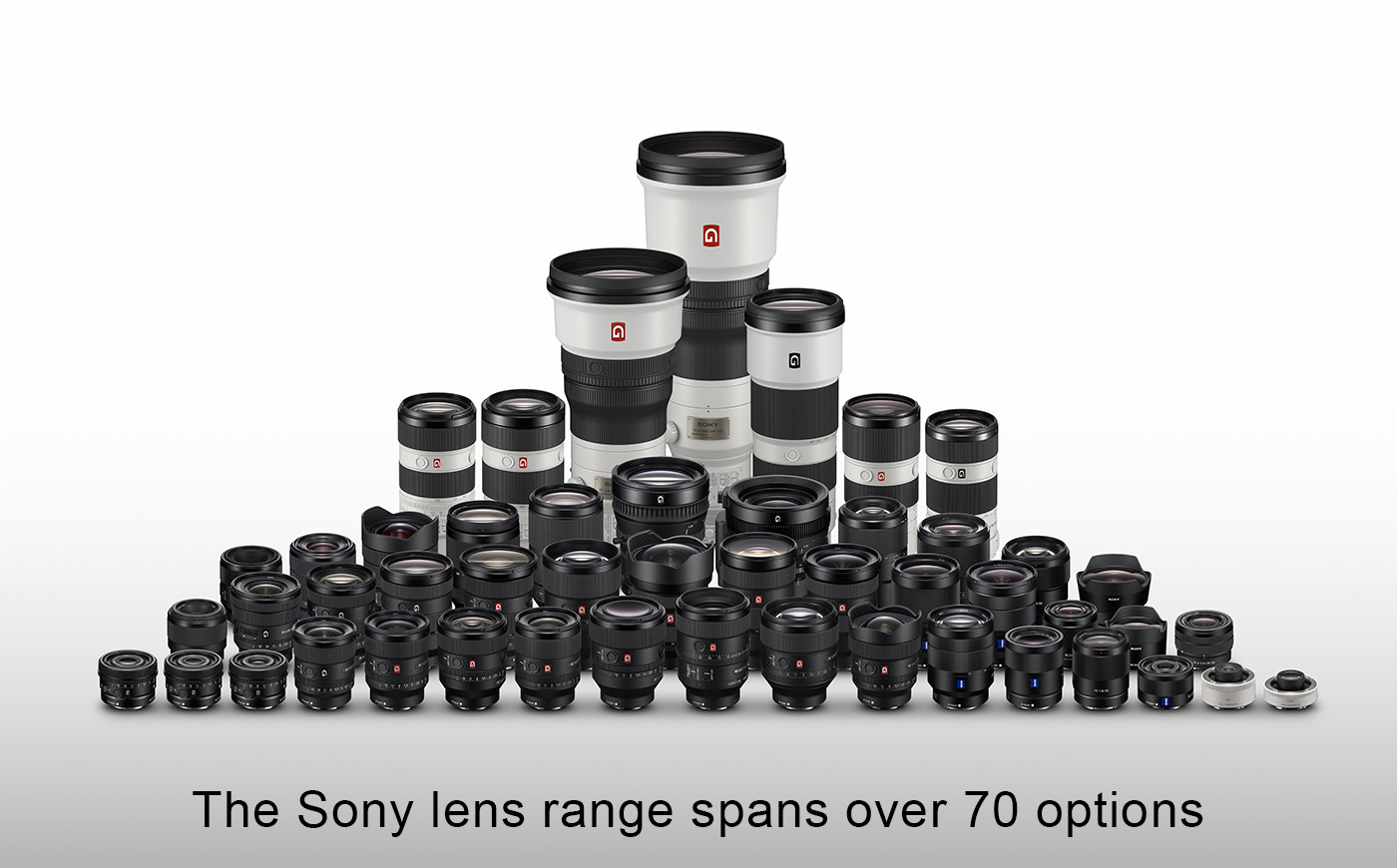
Sony camera sample images
All of the sample images for this celebration have been made over the last couple of years with Sony full-frame cameras and a variety of E-mount lenses. While initially focused solely on landscape photography, my portfolio has been updated to include nature, wildlife and close-up photography, all with a common outdoor theme. Nick is a Sony imaging pro and you can see more of his landscape and nature photography.
For truly inspirational images from some of the world’s best photographers I also urge you to explore Sony Europe imaging ambassadors photos, where you’ll find amazing shots spanning every imaginable genre.

Dog. Sony ILCE-7RM5 with FE 70-200mm F2.8 GM OSS II @200mm by Nick Dautlich Camera settings: 1/1000 sec. f/2.8. ISO 1000
Sony full-frame camera comparison
The table below compares Sony’s most popular full-frame mirrorless cameras, highlighting advanced hybrid features and key image capabilities for creators.
|
Camera |
Resolution / max fps |
Internal video |
Processor |
|
50.1MP / 30fps |
8K/30p – 4K/120p |
BIONZ XR |
|
|
24.2MP / 20fps |
4K/24p |
BIONZ X |
|
|
61.2MP / 10fps |
8K/24p – 4K/60p |
BIONZ XR + AI AF processor |
|
|
12.1MP / 10fps |
4K/120p |
BIONZ XR |
|
|
33.0MP / 10fps |
4K/60p |
BIONZ XR |
|
|
33.0MP / 10fps |
4K/60p |
BIONZ XR + AI AF processor |
|
|
61.2MP / 8fps |
4K/60p |
BIONZ XR + AI AF processor |
With such advanced technology, which is into its fifth generation, Sony A7 cameras offer incredible potential to content creators, limited only by your imagination.
I find that Sony full frame is a brilliant ecosystem to shoot with, which offers cutting-edge features, an extensive lens selection and continual product development, making it faster, and easier than ever to create better quality images.
Whether you’re a solo Youtube creator, professional photographer, or just starting out on this amazing hobby, you can find your perfect Sony mirrorless camera here, and embark on a journey that takes your imagination everywhere.
Don’t forget that you can snag a free quote and entirely hassle-free camera upgrade route by using Park Cameras trade-in service.
Videos and reviews
Sony a7C II vs a7CR Comparison Video | How to Choose between them
Sony released the a7C II and a7C R earlier this year but how do you choose which one is right for you?
Share this post:
By Nick Dautlich on 16/10/2023
Nick Dautlich
Senior Content Writer and Product Reviewer
Nick Dautlich is the Senior Content Writer and Product Reviewer at Park Cameras, with over 15 years of photography experience. A Sony Imaging Professional and expert reviewer, Nick has worked with major brands such as Canon, Sony and Nikon. His work is also featured on Vanguard World UK’s website, Capture Landscapes, and Shutter Evolve. Nick’s photography includes National Trust projects and magazine covers and he is passionate about landscapes and storytelling. Nick also enjoys hiking and teaching his children about nature. Learn more on his profile page.

Trade in your old equipment
Fast and easy trade in service ensures your old gear is collected efficiently and you are paid quickly! It's very simple to trade in your unwanted photography gear. Just head over to our dedicated Sell or Part Exchange page, fill out the details, and we'll get back to you with an offer for your old gear. Take the cash, or put it towards the cost of your new gear. It's up to you! Find out more
sign up to the newsletter
Keep up to date on the latest photography news, events and offers. Sign up now
